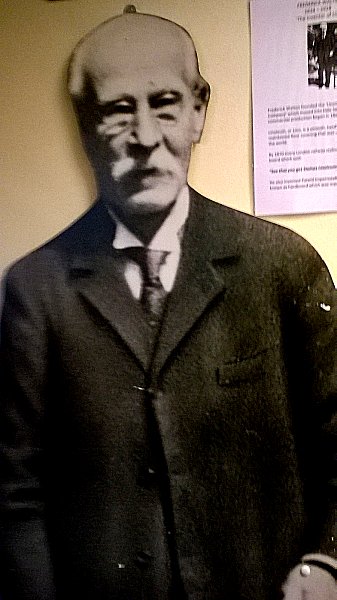
Frederick
Walton
(This standee is located in the Thames Room of Spelthorne
Museum.)
Linoleum (Latin = Linum for flax and Oleum for oil),
was invented by Frederick Walton in 1860. (Patented in 1862).
Walton rented a mustard mill (Hale), in Staines in 1867
to manufacture this highly durable floor covering made from
combined renewable materials. Staines Linoleum Company, became
an industry which achieved worldwide success over many years.
Walton then bought the Hale Mill, which had been a working Mill
on the River Colne since the 13th century, in 1871.

Frederick
Walton with some of the Lino buildings behind him.

Two
of the old Lino buildings (numbers
16 and 17).
|

The
Linoleum Factory is located in a triangle from the red dot to
the right, across by the railway line and behind the High Street
back to the red dot. It was a massive place (over 12 acres)
and I remember when I was a kid in the 50's going to picnics
and sports days in their own sports fields. Also there were
parties for kids at Christmas every year, with Father Christmas
giving every child a present. My Dad worked there for many years,
as did many other local people. At one point there were 3,000
people employed there.
|
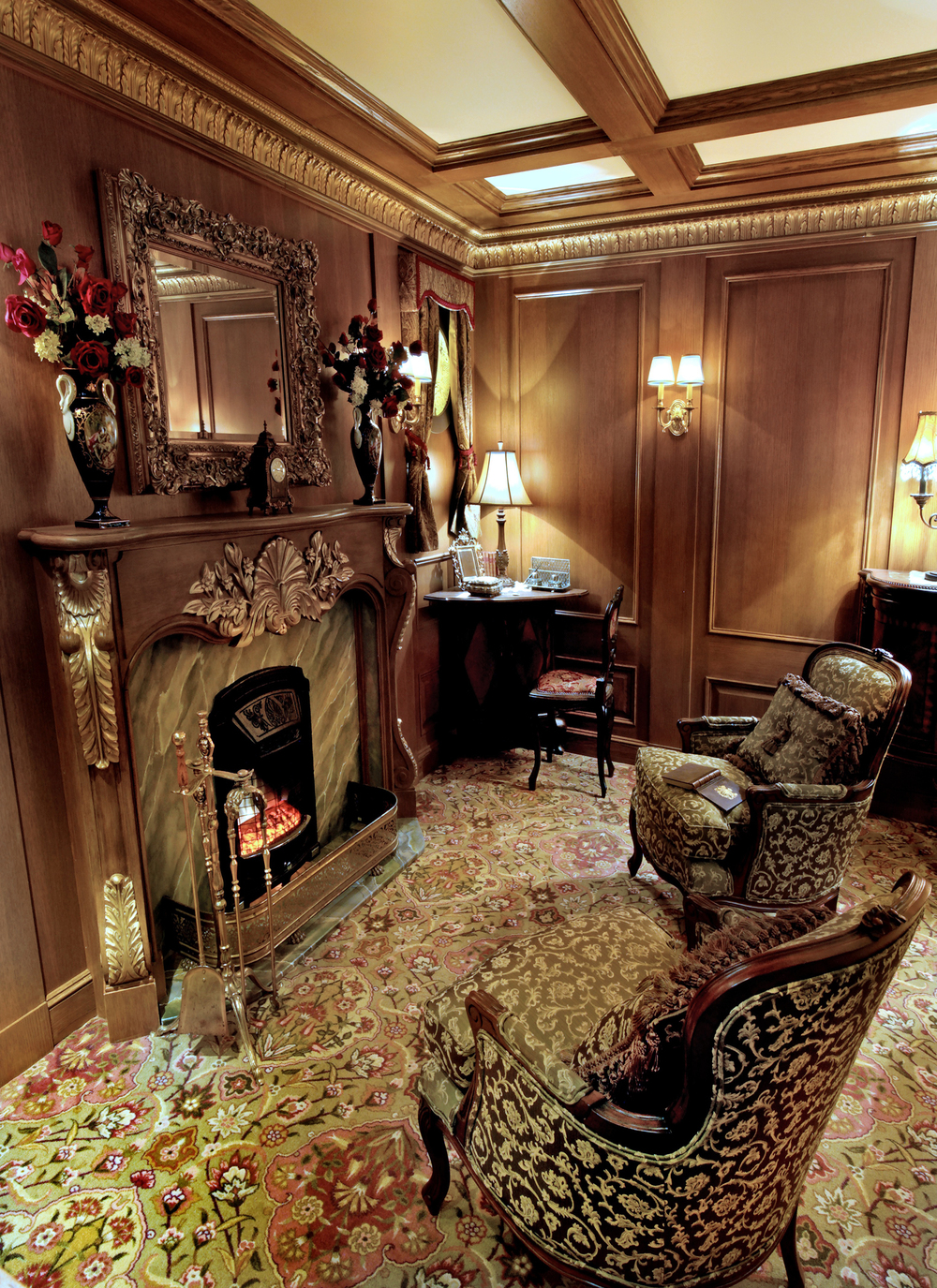 |
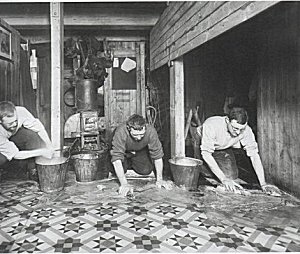
Staines
linoleum was exported throughout the world, and in 1907,
the White Star Line had installed Lino on board their
ships, including the Titanic (left) The Linoleum was a
major industry and source of employment for the area,
prior to WW11 they employed more than 3,000 people, and
the area of the factory had expanded to over 12 acres
on both sides of the railway track. Production of Lino
continued up until 1969. |
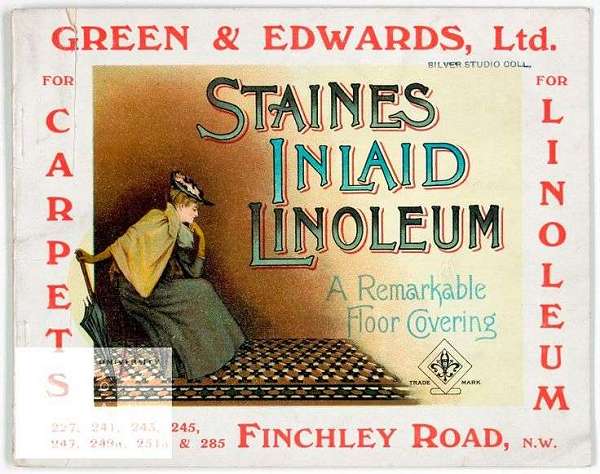
Various
Publicity advertisements
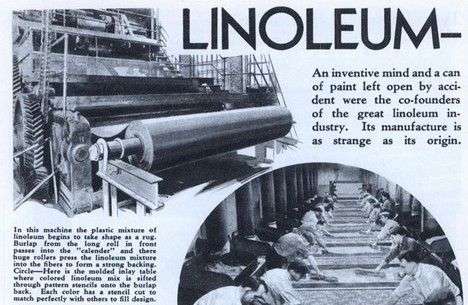
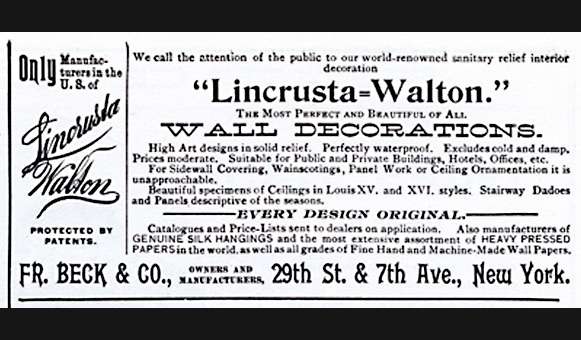
Lincrusta
was a wall covering that was originally produced by Frederick
Walton and Co. Wall Decoration Manufacturers, in 1878 in Hanworth
Rd. Sunbury. This ad was from New York, NY, USA. (Walton
had erected a factory, Joseph Wild Co. on Staten Island, NY
within ten years of opening the Staines factory.)
|
A
sculpture in Staines High Street depicting men who worked at
the Lino.
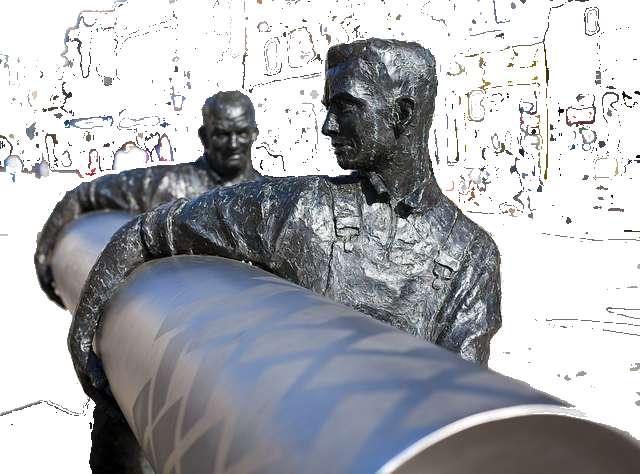
The Lino Men
Or
Release Every Pattern
Both
photos manipulated by Gloria Hazell
|
A Few of the
Various Lino Designs
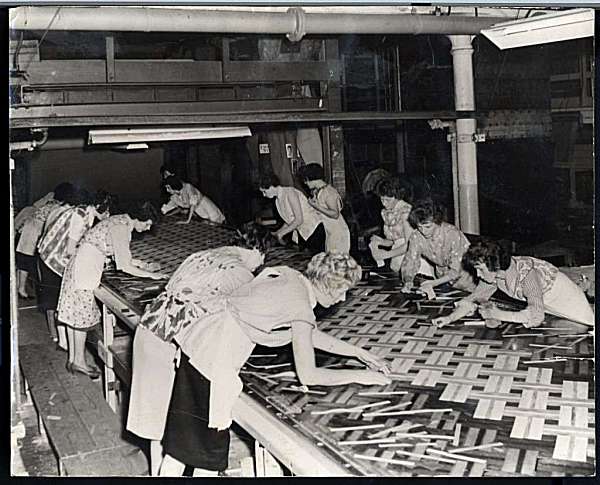
The
Lino Women
These are some of the women who made these designs. All done
by hand.
|
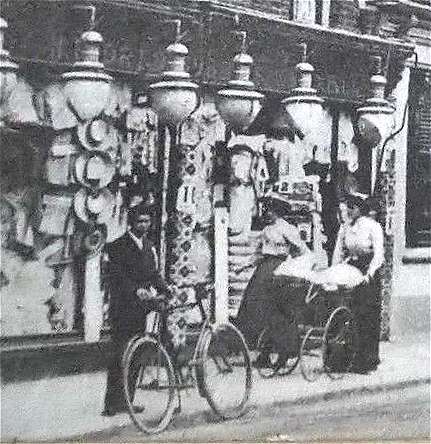
It
looks like there are rolls of Lino outside this shop for sale.
This shop was next to the Angel and Crown Hotel.
This was around 1900.

The
patent that was on every roll of Lino. Shown today in the Spelthorne
Museum, Staines.

During
the Wars the factory became a Munitions factory, in WW1 it was
the Staines Projectile Company. In WW11, Whiteheads, who produced
torpedos. (My Mum worked at Whiteheads, she often talked
about the time she spent there, and all of the girls who worked
alongside her, she was Dot and her best friend was Dash, because
they were both Dorothy's. She never said that they made torpedos
though, she never let on what they made even though the war
had been over for many years! Loose lips.... even years later!)
After
the Lino closed in the 1970's, the buildings were used by various
Companies when the Estate became the 'Central Trading Estate'.
The area was changed in 1996 when the buildings were demolished
and the Two Rivers Shopping Centre was built. The sports field
and the factory on the other side of the railway line became
the Moormede Housing Estate in the late 70's.
|

|
Various
Photos from Google Earth and elsewhere of different places in
Staines plus extra information are listed below.
|
|




![]()
![]()
